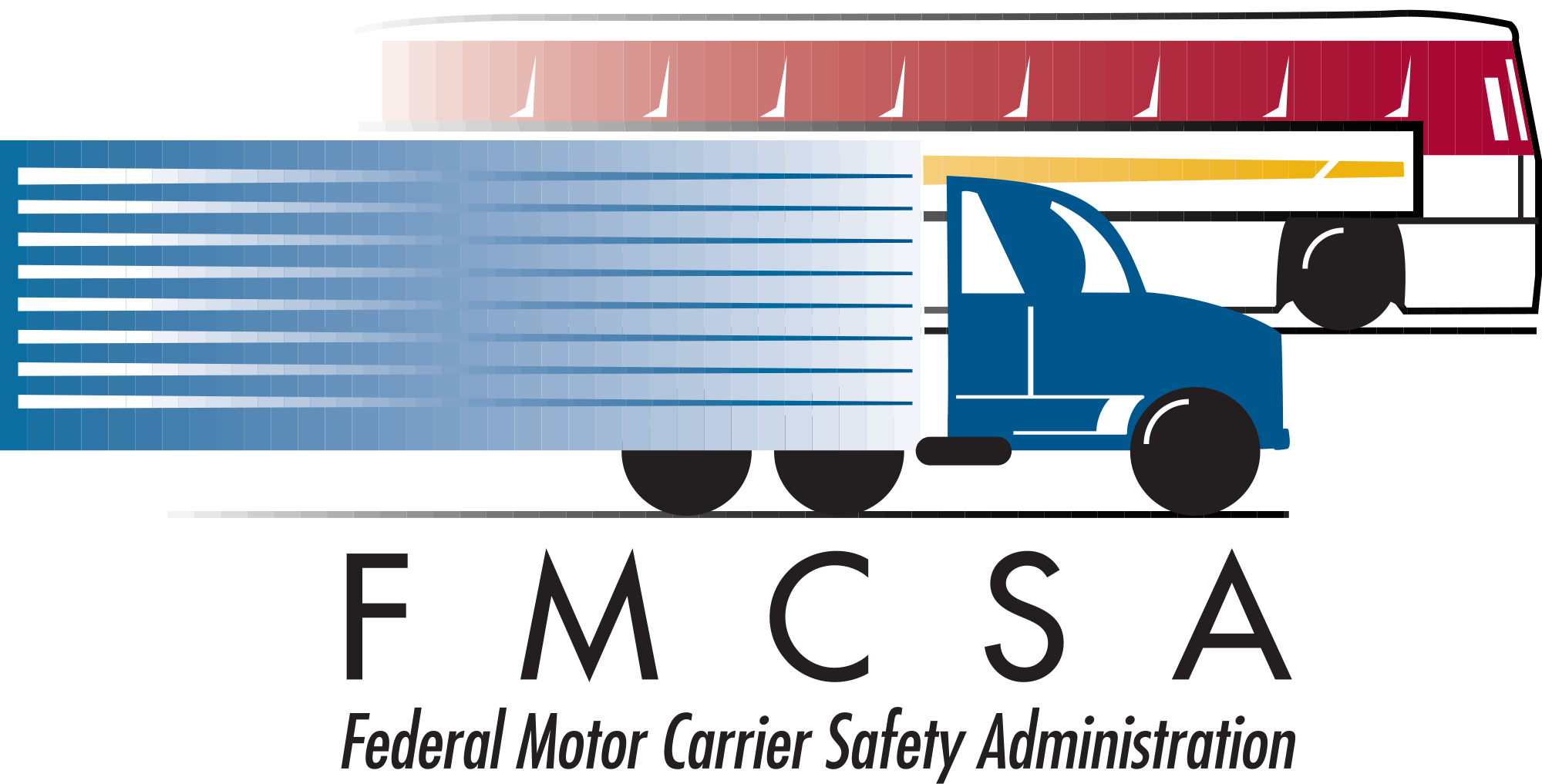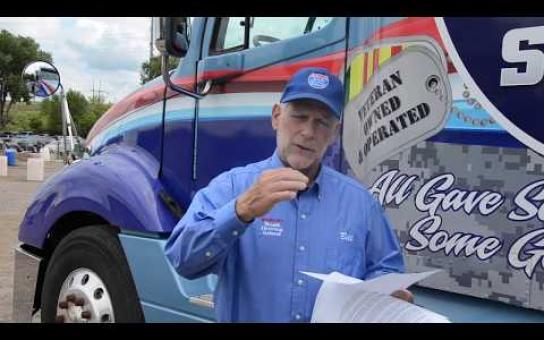Industry Update - August 11th, 2017
Submitted by Bill on
The Federal Motor Carrier Safety Administration has had two announcements this week pertaining to medical issues effecting Commercial Truck Drivers. The Feds may be backing off on sleep apnea rules and at the same time opening the door to drivers seeking a waiver when taking insulin to control diabetes. Here are some articles published this week on the subjects: FMCSA withdraws plan for sleep apnea rulemaking Agency says current safety programs are 'appropriate' The Federal Motor Carrier Safety Administration (FMCSA) and Federal Railroad Administration (FRA) have decided against moving forward at this time on a possible regulation covering the testing and treatment of sleep apnea for truck drivers and other transportation workers. “The agencies believe that current safety programs and FRA’s rulemaking addressing fatigue risk management are the appropriate avenues to address [obstructive sleep apnea],” according to a Federal Register posting. In March 2016, the agencies published an advance notice of proposed rulemaking and sought feedback whether mandatory screening should be required for certain workers. That came after a joint study by the University of Pennsylvania and sponsored by FMCSA and the American Transportation Research Institute that found about 28 percent of commercial truck drivers suffer from mild to severe sleep apnea. “Studies show that people with untreated sleep apnea have an increased risk of being involved in a fatigue-related motor vehicle crash,” according to information still posted on FMCSA’s web site. The National Transportation Safety Board has recommended screening of truckers for sleep apnea for many years. NTSB spokesman Christopher O’Neil told Bloomberg Newsthe agency was “disappointed” with this decision. FMCSA said it will consider an update to its existing sleep apnea guidance. That potentially could include recommendations made last fall by two agency advisory committees that called for truckers with a body mass index 40 or higher be flagged for screening, and those with a BMI of 33 or higher be subject to screening if they meet certain other criteria. The Trump administration is forging ahead with a controversial decision to scrap Obama-era plans to require that all truck, train and bus operators be screened for sleep apnea. The elimination of the rule, part of the White House’s push to slash federal regulations, has reignited a debate over how to balance safety concerns with regulatory relief. Safety advocates warn that killing the proposal could put lives at risk at a time when traffic deaths are already climbing at historic rates: fatalities in large truck crashes have increased by 20 percent since 2009. “It’s incredibly dangerous to think someone behind the wheel of an 80,000 lb rig might have this disorder and fall asleep while driving,” said Catherine Chase, vice president of governmental affairs for the Advocates for Highway and Auto Safety. The administration “has stepped away, instead of stepping toward, the problem of addressing fatigue. Truck death crashes are on the rise, and we need to think of solutions instead of taking away potential answers.” Growing alarm over sleep apnea The Federal Railroad Administration (FRA) issued a safety advisory last fall urging railroads to screen and treat workers for obstructive sleep apnea, amid growing concern that the condition can cause workers to fall asleep on the job. The recommendation was supposed to serve as a placeholder while the agency wrote new rules requiring railroads and other transportation companies to screen its operators for the sleeping disorder. The FRA first issued a safety advisory on the issue back in 2004, prompting some railroads to start their own sleep apnea programs. The latest safety effort came in the wake of reports that the engineer of a New Jersey Transit train who slammed into a crowded station platform had severe sleep apnea, but wasn’t diagnosed until one month after the crash. The crash was just the latest example of an untreated sleep disorder being a factor in a fatal crash. The condition was linked to a 2013 Metro-North derailment in New York and a deadly 2000 tractor-trailer crash in Tennessee. After the 2013 incident, in which the engineer dozed off before crashing, Metro-North tested its engineers and determined that about 18 percent of them suffered from sleep apnea. Sleep apnea causes a person’s airways to close and stops their breathing during sleep, leading to potentially dangerous daytime drowsiness. In one severe case, a man with the condition was found to only be getting 15 minutes of restorative sleep per night. That’s particularly concerning for commercial vehicle operators, who often work long shifts with irregular hours. Drowsy driving is responsible for tens of thousands of U.S. road crashes every year. While airplane pilots with sleep apnea can’t even fly until they have been fully treated for the condition, it wasn’t until the Obama administration that formal federal mandates were in the works to ensure those operating planes, rails, buses and trucks were properly screened. “If they’re not identified in the first place, how can they receive the treatment that they need?” Chase said. Trump reverses course The FRA and the Federal Motor Carrier Safety Administration (FMCSA) announced last week, however, that they would be abandoning plans to require sleep apnea screening and treatment for all rail and truck operators. The administration said it gathered significant information and held public listening sessions on the idea, but “did not receive sufficient data to support future rulemaking at this time.” “The agencies determined that current and upcoming safety programs appropriately address fatigue risks, including OSA [obstructive sleep apnea],” said a spokesperson for the Department of Transportation (DOT). “FRA will continue to monitor railroads’ voluntary OSA programs and compliance with fatigue risk management plans, once implemented as part of risk reduction and system safety program.” The industry, which lobbied against the change, points out that the White House’s action does nothing to prevent carriers and railroads from testing for sleep apnea, which many companies already voluntarily do, nor does it exempt drivers from a requirement to be regularly examined by a DOT-certified medical examiner. Companies have also taken other measures to reduce fatigue, such as through modifying schedules and implementing training education programs. “As an industry committed to safety, railroads recognize that employee fatigue is a real concern. Long before the FRA began examining standards, the industry took innovative steps to combat fatigue in the workplace,” said a spokeswoman for the Association of American Railroads. “Those efforts continue. Every railroad has their own plans to ensure crews are properly rested.” Safety advocates argue that there is no enforcement mechanism or recourse if a company chooses not to screen and treat its employees for the condition. “There’s no way to hold someone to that responsibility,” Chase said. “While one company may do it, another may not. Therefore you’re sacrificing the safety of all motorists.” The National Transportation Safety Board (NTSB) said in a statement that it was disappointed that the FRA dropped the “much-needed rulemaking” and pointed out that sleep apnea has been the probable cause of 10 highway and rail accidents investigated by the safety board in the past 17 years. Some members of Congress have slammed the decision, with Minority Leader Chuck Schumer (D-N.Y.) vowing to keep fighting for the proposal and Sen. Cory Booker (D-N.J.) calling the move “shortsighted and dangerous.” Sen. Richard Blumenthal (D-Conn.) told The Hill he is spearheading a letter to demand a more thorough explanation from the administration about why it pulled the proposal. “I was outraged... This rule reversal is inexcusable,” Blumenthal said Wednesday. “The slew of crashes and tragic incidents resulting from inadequate safety screening for sleep disorders are examples of why we need this rule.” Schumer: After So Much Progress, It Makes No Sense For The Feds To Derail Sleep Apnea Testing & Screening Safety Reforms Published on August 9, 2017 Standing at the Long Island Rail Road (LIRR) Mineola station, U.S. Senator Charles E. Schumer today demanded that the U.S. Federal Railroad Administration (FRA) and the Federal Motor Carrier Safety Administration (FMCSA) reverse their abrupt decision to derail a rulemaking process that would have paved the way for required sleep apnea screening and treatment mandates for rail workers and commercial truck drivers across the nation. Schumer’s call comes after the two agencies formally backed out of their process to consider requiring sleep apnea testing on the federal level. Schumer wants both of these federal agencies to immediately reverse course and stick to the plan he fought for in 2016 that moved to make sleep apnea testing the law of the land. “It doesn’t take Albert Einstein to understand why it is so important to begin the process of requiring sleep apnea testing across-the-board and at the federal level,” says Sen Schumer in a release. “We don’t want train engineers with undiagnosed sleep apnea, who actually hold lives in their hands, to fall asleep at the switch and we don’t want big-rig drivers to doze off at the wheel. That’s why NTSB’s recommendations to get this done should be the law of the land and why I have pushed so hard on this subject for years. This abrupt and uncalled for withdrawal by USDOT commemorates a disaster waiting to happen and that’s why I’m now calling on the both of these agencies to get these rules and this process back on track. It is high time to move forward with making sleep apnea testing a federal requirement, no ifs ands, or butts about it.” Following a 2013 Metro-North derailment in the Bronx that tragically killed 4 people, the MTA began developing a pilot project to screen and treat Metro-North engineers for sleep disorders and later expanded the program to the LIRR. Similarly, following a 2008 accident on the T in Boston, the New York City Transit system began screening and treating subway train operators for obstructive sleep apnea. Finally in 2016, the FRA and FMCSA began to move forward with a rulemaking process that would have paved the way for required sleep apnea testing across the board; however, this week the agencies officially announced that they plan to withdraw this rulemaking process. Schumer says that after so much progress, it makes no sense for the feds to derail sleep apnea testing and without this requirement, the safety of rail passengers could be put at risk. On Jan 4, a Long Island Rail Road train originating from Far Rockaway derailed at Brooklyn’s Atlantic Terminal, injuring 103 people. According to the National Transportation Safety Board, the train was traveling at more than 10 miles per hour when it hit a bumping block at the end of the tracks and crashed into a small room, causing the first 2 cars of the train to derail. The speed limit at this portion of the tracks is 5 miles per hour. According to reports, the engineer operating the train said he could not remember the crash. The engineer began his shift around midnight, while the crash occurred around 8 am. In December 2013, a Metro-North train derailed near Spuyten Duyvil, tragically killing four people and injuring sixty. NTSB determined later that the conductor of the train had sleep apnea, which had caused him to fall asleep at the controls. Following the deadly accident, the NTSB again recommended that Metro-North and LIRR develop protocols for screening employees for sleep disorders and ensuring that any employees diagnosed with such a disorder, like sleep apnea, receive the treatment they need. Following this derailment, the MTA began developing a pilot project to screen and treat Metro-North engineers for sleep disorders. Similarly, following a 2008 accident on the T in Boston, the New York City Transit system began screening and treating subway train operators for obstructive sleep apnea syndrome. Sleep apnea also played a role in the derailment of a New Jersey Transit train at the Hoboken Terminal that killed one person and injured 114. In addition to those two incidents, there are a number of other accidents, including the May 2008 derailment of an MBTA train in Newton, MA that have been at least partially linked to sleep apnea. In fact, nearly 20 percent of the major investigations completed by NTSB between 2001 and 2012 identified fatigue issues as a probable cause. Earlier this year, Schumer called on the National Transportation Safety Board (NTSB), the nation’s premier safety organization, to launch a thorough examination into which passenger railroad systems have yet to launch sleep apnea testing programs and install inward facing cameras—and then publicize the report for all to see. Schumer explained what happens across the country when a derailment occurs: one individual rail system promises changes, yet those changes aren’t implemented or they happen far too slowly and the other railroads don’t heed the lessons—many of them sad—learned by other railroads. The National Transportation Safety Board recommended that the Federal Railroad Administration require all railroads to screen for and treat sleep apnea more than a decade ago, after a 2001 accident in Michigan, however, some rail lines have yet to perform a single sleep apnea test. Finally, in 2016, the Federal Railroad Administration agreed to begin the rulemaking process to require sleep apnea testing for train operators but that rule has not yet been finalized. This past week, FRA and FMCSA withdrew a proposed rule focused on requiring sleep apnea tests. Schumer said that while the MTA has committed to sleep apnea testing, a federal law would force all rail lines to conduct these tests without wiggle room. Moreover, Schumer said that a federal rule requiring these tests means that rail lines cannot one day decide to stop conducting these screenings. Schumer said that sleep apnea testing should be the law of the land for rail workers and commercial drivers. Schumer said that without proactive testing and screening, deadly derailments could keep happening and put rail passengers and everyday commuters in danger. The Long Island Rail Road Commuter Council (LIRRCC) also supports Senator Schumer’s efforts to oppose the withdrawal of a proposed rule aimed at developing obstructive sleep apnea screening and treatment requirement for commercial truck drivers and rail workers. The LIRRCC says it has seen the alarming impacts of undiagnosed obstructive sleep apnea, which is estimated to affect 3 to 7 percent of adult men and 2 to 5 percent of adult women, in the December 2013 Spuyten Duyvil derailment on the MTA Metro North Railroad. “The LIRR and other MTA operating agencies are moving forward with a program designed to identify and treat operating personnel who have obstructive sleep apnea. We believe that undiagnosed sleep disorders present a significant risk for riders and that programs for screening and treatment should be available and consistent nationwide,” said LIRRCC Chair Mark Epstein. DOT may alter protocol for diabetic truck drivers Insulin-dependent diabetic truckers may no longer have to request a formal exemption from the Federal Motor Carrier Safety Administration, should a new federal rule go into effect. The Federal Motor Carrier Safety Administration announced Monday it is seeking public comments on a revised 2015 rule eliminating the exemption requirement for insulin-dependent diabetic drivers. Instead, the rule would give individual medical examiners authority to grant or deny diabetic drivers their medical certificates. FMCSA is accepting public comments through Sept. 25. As part of the revised rule, FMCSA may have drivers submit an assessment form to their medical examiner. The form would ask about the driver’s history with insulin, date of their last comprehensive eye exam, any diabetes-related complications they’ve experienced, and more. “This information will assist the (medical examiner) in determining whether insulin treatment or any medical complications of diabetes will impact a driver’s ability to safely operate a CMV,” the agency said in its announcement. “Therefore, FMCSA expects that 100 percent of drivers who are treated with insulin and intend to operate a CMV in interstate commerce will have the form completed by their (treating clinician).” The agency hasn’t provided a timeline for when it would implement the new protocol, should it proceed with the rule. Public comments on the revised rule proposal, identified as FMCSA-2005-23151, can be submitted online through the Federal eRulemaking Portal. Here is a link to making comments: https://www.federalregister.gov/documents/2017/07/27/2017-15835/agency-i...
Bill Collins weekly industry update

Changes effecting Commercial Truck Drivers








